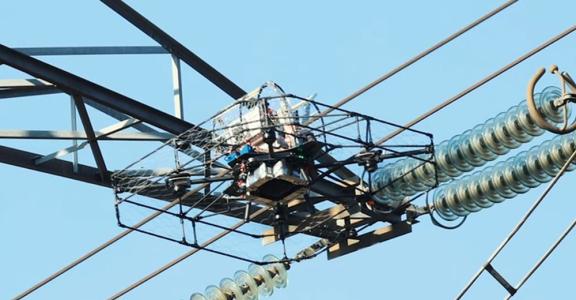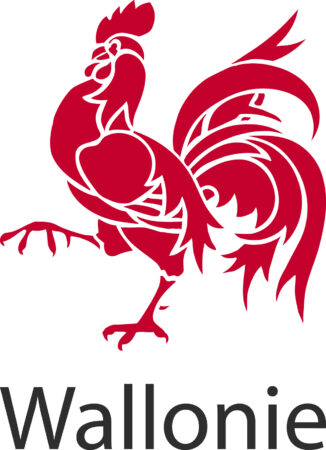Installation of sensors on a high-voltage line by drone
As part of the Skywin pole project called “SW_AMPASENS”, Ampacimon and its partner Skydrone, Multitel and Sirris have collaborated to develop an innovative solution for installing Ampacimon sensors on high-voltage lines, by using a drone. This initiative stemmed from the need to optimise the use and capacity of high-voltage lines, while overcoming the technical challenges inherent to the installation of these sensors using traditional methods.
Ampacimon’s solution: real-time monitoring of high-voltage lines
The sensor solution developed by Ampacimon, for more than 10 years, enables the real-time monitoring of electrical flow in high-voltage lines along with their mechanical stresses. These self-powered sensors enable maximum safe energy transmission, by checking the line’s subsidence and temperature.
Installation by drone: speed, efficiency and safety
Traditional installation of the unit on the high-voltage line usually involves complex expensive operations, such as the use of ladders, boom trucks or even helicopters. Installation by drone means greatly simplifying the process and easy positioning of the device on the cable and offers a speedy, efficient solution that performs the operations in record time.
The drone installation solution is also designed to enable sensor placing live, so avoiding shutting down the line as in most current cases. So this solution also means avoiding the very high indirect costs related to shutting down the line borne by network managers.
From conception to first functional prototypes
The project involved several main elements:
- Development of a dedicated drone,
- Development of a new sensor including the unit, an automatic cable attaching mechanism and new electronics,
- Development of a platform and interface between the drone and the sensor,
All of this had to comply with a list of strict criteria such as maximum permitted weight and electromagnetic shielding.
As part of this project, Sirris contributed to the development of these elements by making available its advanced skills in:
- 3D modelling
- Digital simulation
- Knowledge of materials
- Manufacturing – Prototyping & Machining
The project started with the outlining of several solutions, expanding a set of ideas as far as possible, and then converging onto the concepts to be developed further.
Sirris rapidly developed a first version of the tools facilitating the drone’s approach to the cable and enabling the drone to attach safely, while dealing with electromagnetic aspects, in order to fit a sensor.
The unit constituting the sensor was then developed. By combining inventive and innovative solutions, Sirris arranged the movements for closing and clamping the unit to the cable with a minimum of actuators to reduce the mechanism’s weight as far as possible.
Many interactions with the project partners and Ampacimon’s active participation in the various tasks enabled the development of a first functional version of the sensor installing drone.
Seeking continuous improvement
Seeking continuous improvement, the consortium undertook developments to optimise the operation and weight of the various elements. Sirris provided its design knowhow in order to perform this optimisation work effectively. The mechanisms have been reviewed and improved, the material choices rediscussed and the geometries and textures optimised.
The end result: a drone, an interface platform and a unit meeting the requirements of their initial specifications and capable of fitting a sensor in less than 90 seconds on a live high-voltage line.
With the support of the Skywin & MecaTech poles and SPW-EER.
Want more information about our expertise? Product Development Hub | Sirris




